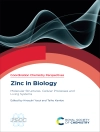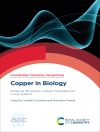Organometallic chemistry is an interdisciplinary science which continues to grow at a rapid pace. Although there is continued interest in synthetic and structural studies the last decade has seen a growing interest in the potential of organometallic chemistry to provide answers to problems in catalysis synthetic organic chemistry and also in the development of new materials. This Specialist Periodical Report aims to reflect these current interests reviewing progress in theoretical organometallic chemistry, main group chemistry, the lanthanides and all aspects of transition metal chemistry. Volume 34 covers literature published up to January 2006.
Зміст
Chapter 1: Samarium enolates and their application in organic synthesis;
Chapter 2: Metal boryl compounds and metal-catalysed borylation processes: synthetic applications and mechanistic considerations;
Chapter 3: Organometallics in ionic liquids – catalysis and coordination chemistry;
Chapter 4: Groups 1 and 11;
the alkali and coinage metals;
Chapter 5: Group 2 (Be-Ba) and group 12 (Zn-Hg);
Chapter 6: Scandium, yttrium and the lanthanides;
Chapter 7: Group 14: silicon, germanium, tin and lead;
Chapter 8: Organo-transition metal cluster complexes
Про автора
Professor Ian Fairlamb’s core interests are in transition metal chemistry in synthetic organic chemistry, catalyst design and mechanistic understanding. His work has strong links to biological chemistry, particularly the utilisation of transition metal chemistry in the synthesis of therapeutic agents such as CO releasing molecules and functionalised heteroaromatic compounds. Dr Lynam’s main research interest is in the synthesis of transition metal complexes containing nucleobases with a view to utilising the hydrogen bonding properties of these species to direct the self assembly of supramolecular organometallic architectures.












